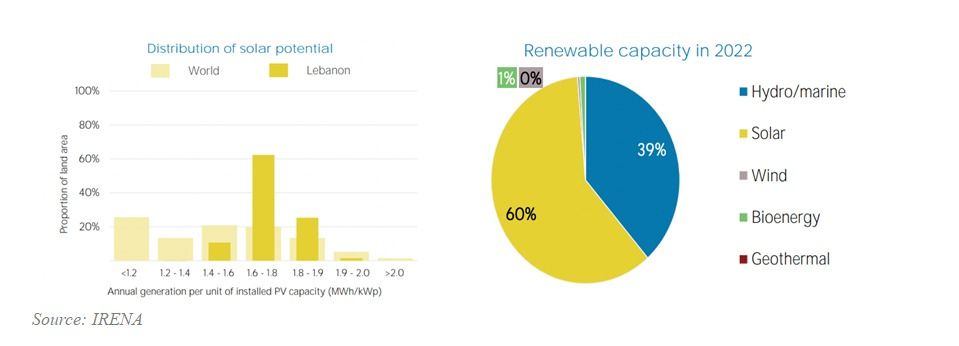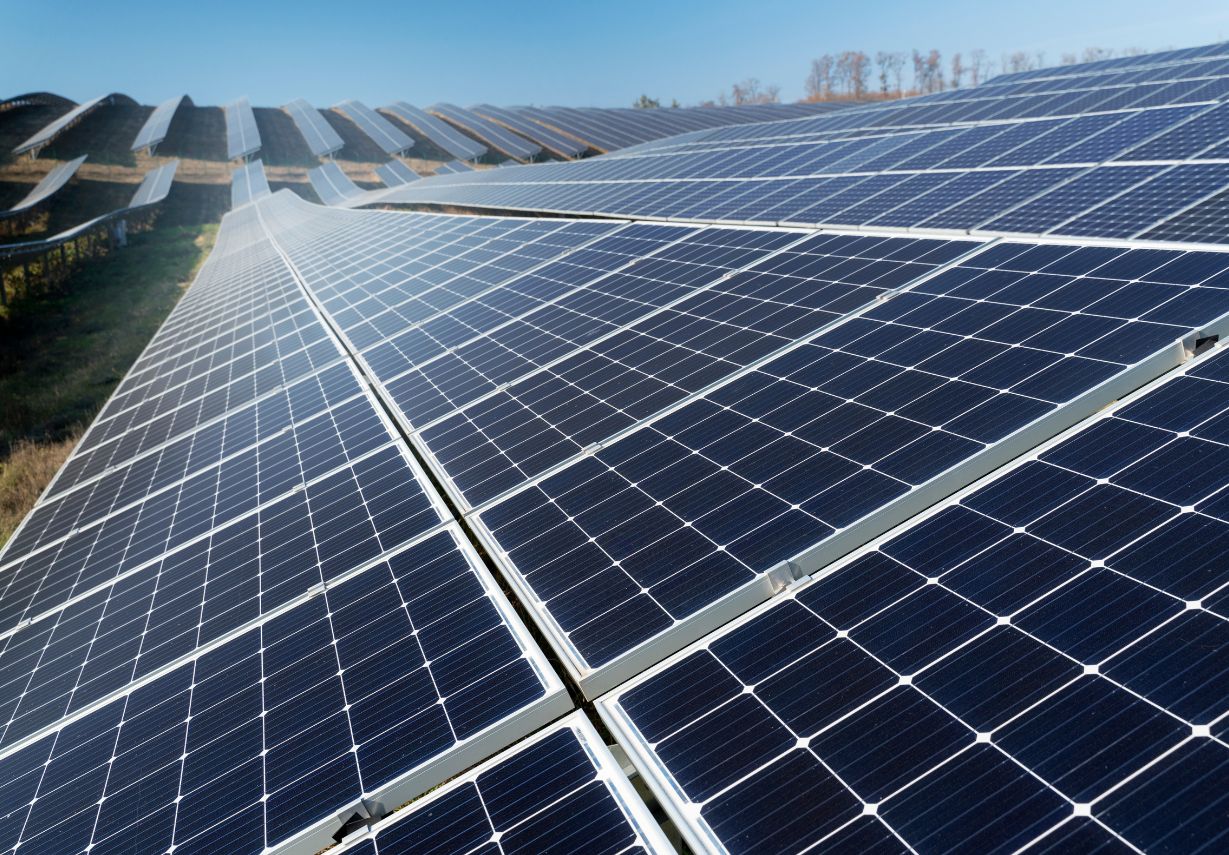Lebanon’s persistent electricity crisis has brought the nation dangerously close to a financial collapse. Prolonged power outages are severely hampering economic activity, and the extensive subsidies for electricity have contributed to Lebanon carrying one of the world’s heaviest public debt burdens. People are forced to spend 21-23 hours in total darkness or privately source electricity at outrageous rates. Many are forced to reprioritize their needs, laying aside their generator subscriptions.
Since October 2019, Lebanon’s economy has been in a deep financial crisis. The World Bank has called the crisis one of the worst in modern history. Inflation soared to 145 percent on average in 2021, placing Lebanon third globally in terms of the highest inflation rates, after Venezuela and Sudan.
The pandemic worsened the already challenging economic downturn, accelerating the overall collapse of Lebanon’s economy. This surge in inflation also scrapped the purchasing power of the population, making it increasingly difficult for households to afford even basic necessities. In Lebanon, access to electricity has now become a privilege reserved only for the wealthiest. Furthering the nation’s evident wealth inequality and driving more people into poverty during one of the most severe economic crises in recent history. To top it up, Lebanon has struggled with frequent power shortages for several years, and past attempts to solve this problem have faced obstacles due to conflicts, political instability, and the complexities of governance.
Lebanon’s Energy Scenario
Since the start of Lebanon’s civil war in 1975, the national electricity grid has been unable to meet the needs of the population. As a result, people have had to depend on costly local generators to bridge the energy gaps. Even though the civil war officially ended in 1990, the electricity grid’s issues persisted. In 2021, Electricity of Lebanon, Electricite du Liban (EDL), the state power provider, had to stop supplying electricity due to a lack of fuel, leading to prolonged and widespread blackouts in the country. In Beirut, these blackouts continued for more than a year and a half, with EDL managing to provide only around 3-4 hours of electricity daily.
The state-run Electricité du Liban (EDL) has a generation capacity of around 1,800 megawatts, according to Pierre Khoury, the director of the government-affiliated Lebanese Center for Energy Conservation (LCEC), compared with the estimated 2,000 to 3,000 megawatts the country needed before the crisis. But EDL provides only around 200 to 250 megawatts in the present day, because the economic collapse means the government struggles to pay for the imported fuel used to power the country’s two main electricity plants.
In 2021, blackouts in Beirut, Lebanon continued for more than a year and a half, with EDL managing to provide only around 3-4 hours of electricity daily
As per Reuters, the government’s net transfers to EdL amounts to $1 billion-$1.5 billion a year, of which most of it spent on fuel oil. The accumulated cost of subsidizing EdL amounts to about 40 percent of Lebanon’s entire debt and continues to have high AT&C losses.
While the grid energy scenario looks gloomy, there is a brighter side to it since people have been turning to solar energy for two main reasons – security of the power supply and the cheapest source of electricity compared to conventional energy. This solar boom not only has had an impact on the lives of people but also has a positive impact on the environment by reducing greenhouse gas emissions that were generated by the generators run on fossil fuels.
Lebanon went from generating zero solar power in 2010 to having 90 megawatts of solar capacity in 2020. But the major surge happened when a further 100 megawatts were added in 2021 and 500 megawatts in 2022, according to the LCEC’s Khoury. The solar panels and battery system, which were installed in July 2020, are saving the family between $3,000 and $4,000 a year in electricity and generator bills. (They spent over $10,000 to install them.)

Lebanon’s experience has highlighted the potential of solar energy as a valuable and dependable source of clean electricity, especially when traditional electricity systems face disruptions.
A report by the International Renewable Energy Agency (IRENA) predicts that Lebanon could cost-effectively obtain 30% of its electricity supply from renewable sources by 2030, if the proper plans were implemented to turn this into a reality. Lebanon gets around 300 days of sun every year and has lots of available land suitable for solar panels and wind turbines. The only aspect missing is the organized implementation of a large-scale project.
Lebanon’s Transport Scenario
Lebanon’s transportation relies heavily on gasoline and diesel, constituting to 97.9% of fuel usage and a strong dependence on fossil fuels. The sector is the second-largest energy consumer, responsible for about 23% of the country’s greenhouse gas emissions. Outdated and polluting cars result in annual economic losses of at least USD 200 million. Public transportation is underdeveloped, with only 35 buses operating on limited routes in 2019. In 2013, Lebanon emitted 26,285 Gg CO2 eq., primarily from burning fossil fuels, notably carbon dioxide. The transport sector alone contributes to 99% of carbon monoxide emissions, 60% of nitrogen oxide emissions, and over 23% of total annual greenhouse gas emissions.
Lebanon’s transport sector alone contributes to 99% of carbon monoxide emissions, 60% of nitrogen oxide emissions, and over 23% of total annual greenhouse gas emissions.
Electric Vehicles – A potential solution to mitigate Transport-related GHG emission
Given the challenging economic conditions prevailing in Lebanon, the prospect of EVs becoming a common sight for individual consumers appears to be a goal best pursued in the future. The realization of this vision is closely linked to the need for a well-developed charging infrastructure, which currently faces limitations. Moreover, economic stability in the country is a key prerequisite for the broader adoption of EVs by individuals. However, amidst these challenges, a glimmer of hope arises when we shift our focus to smaller-scale initiatives. Electrifying fleets and public transportation systems present a more immediate and practical opportunity for embracing EV technology in Lebanon. This approach can significantly contribute to the reduction of greenhouse gas emissions, energy cost savings, and environmental benefits while gradually paving the way for broader EV adoption when conditions are more favorable.
| Transport | E-bus | ICE bus |
| Seater | 23 | 23 |
| Cost | LBP 1,272,280,000 (~84,000 USD) | ~36,000 USD |
According to the above observation: Electric buses (e-Bus) in Lebanon are priced approximately 180% higher than the average cost of traditional ICE (Internal Combustion Engine) buses.
In the context of the country’s current economic landscape, transitioning to electric fleets and public transportation can serve as a stepping stone, promoting the use of EVs and fostering sustainability within Lebanon. It aligns with the goal of enhancing urban mobility, reducing the environmental footprint, and creating a cleaner, more energy-efficient transportation system. This approach, although not an immediate solution for individual consumers, sets the stage for an EV-friendly future when the infrastructure and economic stability are firmly in place.
Solar-based Charging Infrastructure to support EV Adoption
When delving into EV deployment, it’s crucial to consider the vital aspect of Charging Infrastructure. In Lebanon, a burgeoning solar industry with increasingly affordable costs presents a promising solution to tackle energy-related challenges associated with charging EVs. The widespread adoption of solar power for charging infrastructure not only amplifies the advantages of EV deployment but also aligns with a cleaner energy paradigm.
Embracing solar-based charging infrastructure in Lebanon heralds a new era of opportunities for various stakeholders. From entrepreneurs venturing into solar energy solutions to existing businesses seeking to diversify into the EV sector, the prospects are vast. The integration of solar-powered EV charging will not only address the environmental concerns but also foster economic growth and innovation in the region.


